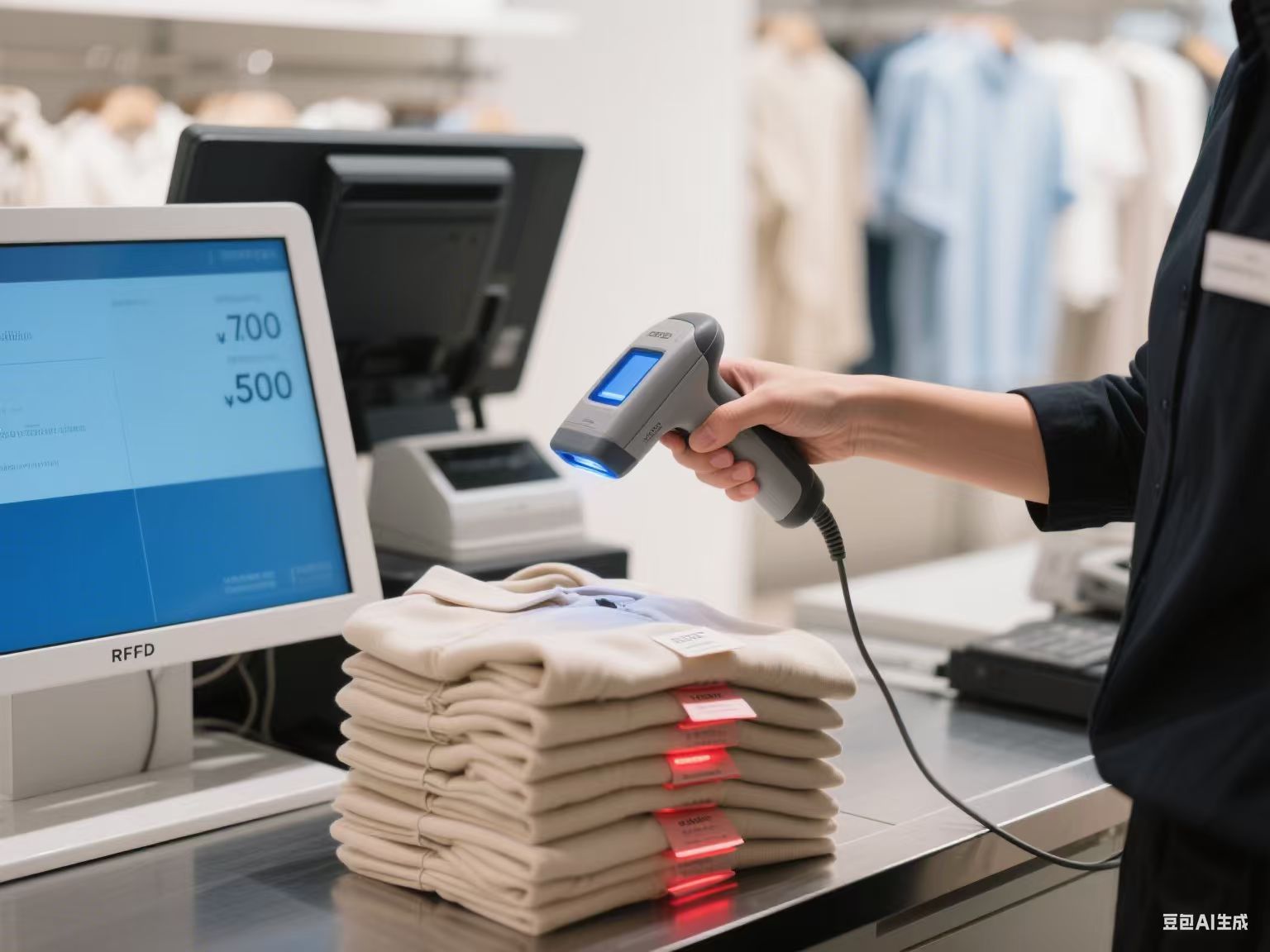Application of RFID Technology in the Clothing Industry
🔍 1. Industry Pain Points: Limitations of Traditional Management Models
1. Inefficient Inventory Management
o Manual inventory checks are time-consuming (requiring store closings) and have a high error rate (only 62%-90%);
o Slow-moving items are difficult to identify promptly, leading to inventory backlogs and tied-up capital.
2. Lack of Supply Chain Transparency
o The flow of goods from production to stores relies on manual record-keeping, resulting in high rates of missed and incorrect shipments;
o Restocking relies on empirical judgment, making best-selling items prone to stock-outs.
3. Shortcomings in the Customer Experience
o Products are difficult to find in stores, and fitting rooms lack personalized recommendations;
o Long checkout lines (average 5 minutes).

⚙️ 2. RFID Technology Solutions: Empowering the Whole Chain from Production to Retail
1. Production and Warehousing
• Smart Tag Embedment
o Ultra-high frequency (UHF) washable electronic tags (such as UT4755) are embedded in clothing collars, care labels, or anti-theft buttons, and are resistant to 60 industrial washes and temperatures up to 180°C.
o Storing full lifecycle data, including fabric, batch, and quality inspector data, to achieve "one item, one code" anti-counterfeiting.
• Automated Process Management
o After labeling cut pieces, the system automatically tracks the process flow and triggers an alarm if quality inspection fails.
o Full-box goods are batched into storage in 5 seconds, with over 99% accuracy.
2. Logistics and Distribution
• Real-time Tracking and Loss Prevention
Operational vehicles are integrated with GPS and RFID, providing instant alerts for abnormal temperature and humidity or unauthorized unpacking.
Operational Disney case study: RFID self-service kiosks manage 3 million pieces of clothing, saving over $1 million annually.
3. Store retail innovation
Application Scenarios | Technology Implementation | Benefits |
Smart Inventory | Handheld terminals (such as the AUTOID UTouch) can scan the entire store in 30 minutes. | Inventory efficiency increased by 80%, labor costs decreased by 30%-59% |
Fitting Room Interaction | Access control readers automatically identify clothing items and display matching suggestions and promotions. | conversion rates increased by 25% |
Quick Product Search | After entering product information, the handheld terminal performs a blind scan to locate the item. | customer wait times decreased, reducing churn |
Contactless Checkout | The shopping cart's integrated reader automatically identifies the total price. | checkout time was reduced from 5 minutes to 30 seconds |
Theft and Loss Prevention | Exit access control detects undemagnetized tags, triggering an alarm. | damage rates decreased by 60%-80% |

📈 3. Core Benefits: Data-Driven Business Value
o 1. Inventory Precision
o Achieve "zero-error inventory" with automatic out-of-stock alerts and breakdown by style, color, and size;
o Brands such as Zara and Decathlon have reduced their replenishment response time by 50% using RFID.
o 2. Increased Sales Conversion
o Optimized display and product selection based on try-on data, resulting in a 6%-14% increase in sales;
o Intelligently recommend related products, increasing average order value by 20%.
o 3. Full-Chain Traceability
o Labels can be read during returns and exchanges to trace production batches, eliminating the risk of package substitution;
o Traceability of environmentally friendly materials and compliance regulations enhances brand trust.
🚀 IV. Challenges and Future Trends
• Current Challenges
The initial investment cost is high (tags cost approximately $0.1-0.3 per unit); signal interference in metal/liquid environments requires optimized antenna deployment.
• Technology Evolution
o Item-Level Penetration: Once tag costs drop to a few cents, management will be expanded from case-level to individual items.
o AIoT Integration: RFID data combined with AI can predict slow-selling risks and dynamically adjust pricing and promotional strategies.
o Sustainable Applications: Degradable electronic tags reduce environmental pressure and promote the development of a green supply chain.
💎 Summarize
RFID technology has become the core engine of the apparel industry's digital transformation. Its value lies not only in addressing inventory and efficiency challenges but also in reshaping the "people-goods-place" relationship through a closed-loop data model. As flexible tag costs decrease and AI integration deepens, this technology will spread from leading brands to smaller and medium-sized businesses, propelling the industry toward a new era of zero inventory errors, full-chain transparency, and personalized experiences.


